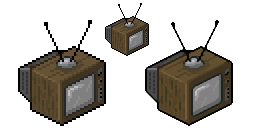
MP3 is a coding format for digital audio developed largely by the Fraunhofer Society in Germany, with support from other digital scientists in the United States and elsewhere. Originally defined as the third audio format of the MPEG-1 standard, it was retained and further extended — defining additional bit-rates and support for more audio channels — as the third audio format of the subsequent MPEG-2 standard. A third version, known as MPEG 2.5 — extended to better support lower bit rates — is commonly implemented, but is not a recognized standard.

A sound card is an internal expansion card that provides input and output of audio signals to and from a computer under the control of computer programs. The term sound card is also applied to external audio interfaces used for professional audio applications.
Windows Media Audio (WMA) is a series of audio codecs and their corresponding audio coding formats developed by Microsoft. It is a proprietary technology that forms part of the Windows Media framework. WMA consists of four distinct codecs. The original WMA codec, known simply as WMA, was conceived as a competitor to the popular MP3 and RealAudio codecs. WMA Pro, a newer and more advanced codec, supports multichannel and high resolution audio. A lossless codec, WMA Lossless, compresses audio data without loss of audio fidelity. WMA Voice, targeted at voice content, applies compression using a range of low bit rates. Microsoft has also developed a digital container format called Advanced Systems Format to store audio encoded by WMA.
A low-pass filter is a filter that passes signals with a frequency lower than a selected cutoff frequency and attenuates signals with frequencies higher than the cutoff frequency. The exact frequency response of the filter depends on the filter design. The filter is sometimes called a high-cut filter, or treble-cut filter in audio applications. A low-pass filter is the complement of a high-pass filter.

A high-pass filter (HPF) is an electronic filter that passes signals with a frequency higher than a certain cutoff frequency and attenuates signals with frequencies lower than the cutoff frequency. The amount of attenuation for each frequency depends on the filter design. A high-pass filter is usually modeled as a linear time-invariant system. It is sometimes called a low-cut filter or bass-cut filter in the context of audio engineering. High-pass filters have many uses, such as blocking DC from circuitry sensitive to non-zero average voltages or radio frequency devices. They can also be used in conjunction with a low-pass filter to produce a bandpass filter.
Speex is an audio compression codec specifically tuned for the reproduction of human speech and also a free software speech codec that may be used on VoIP applications and podcasts. It is based on the CELP speech coding algorithm. Speex claims to be free of any patent restrictions and is licensed under the revised (3-clause) BSD license. It may be used with the Ogg container format or directly transmitted over UDP/RTP. It may also be used with the FLV container format.

Sound Blaster is a family of sound cards designed by Singaporean technology company Creative Technology. Sound Blaster sound cards were the de facto standard for consumer audio on the IBM PC compatible system platform, until the widespread transition to Microsoft Windows 95, which standardized the programming interface at application level, and the evolution in PC design led to onboard audio electronics, which commoditized PC audio functionality. By 1995, Sound Blaster cards had sold over 15 million units worldwide and accounted for seven out of ten sound card sales.

In signal processing, sampling is the reduction of a continuous-time signal to a discrete-time signal. A common example is the conversion of a sound wave to a sequence of "samples". A sample is a value of the signal at a point in time and/or space; this definition differs from the usage in statistics, which refers to a set of such values.

DVD-Audio is a digital format for delivering high-fidelity audio content on a DVD. DVD-Audio uses most of the storage on the disc for high-quality audio and is not intended to be a video delivery format.
Although SPC is normally thought of in industrial applications, it can be applied to virtually any process. Everything done in the workplace is a process. All processes are affected by multiple factors. For example, in the workplace a process can be affected by the environment and the machines employed, the materials used, the methods provided, the measurements taken, and the manpower (people) who operate the process—the Five M’s. If these are the only factors that can affect the process output, and if all of these are perfect—meaning the work environment facilitates quality work; there are no misadjustments in the machines; there are no flaws in the materials; and there are totally accurate and precisely followed work instructions, accurate and repeatable measurements, and people who work with extreme care, following the work instructions perfectly and concentrating fully on their work—and if all of these factors come into congruence, then the process will be in statistical control. This means that there are no special causes adversely affecting the process’s output. Special causes are eliminated. Does that mean that 100% of the output will be perfect? No, it does not. Natural variation is inherent in any process, and it will affect the output. Natural variation is expected to account for roughly 2,700 out-of-limits parts in every 1 million produced by a three-sigma process (±3σ variation), 63 out-of-limits parts in every 1 million produced by a four-sigma process, and so on. Natural variation, if all else remains stable, will account for two out-of-limits parts per billion produced by a true six-sigma process.
WavPack is a free and open-source lossless audio compression format and application implementing the format. It is unique in the way that it supports hybrid audio compression alongside normal compression which is similar to how FLAC works. It also supports compressing a wide variety of lossless formats, including various variants of PCM and also DSD as used in SACDs, together with its support for surround audio.

In computer graphics and digital imaging, imagescaling refers to the resizing of a digital image. In video technology, the magnification of digital material is known as upscaling or resolution enhancement.

Clipping is a form of waveform distortion that occurs when an amplifier is overdriven and attempts to deliver an output voltage or current beyond its maximum capability. Driving an amplifier into clipping may cause it to output power in excess of its power rating.
Sample-rate conversion, sampling-frequency conversion or resampling is the process of changing the sampling rate or sampling frequency of a discrete signal to obtain a new discrete representation of the underlying continuous signal. Application areas include image scaling and audio/visual systems, where different sampling rates may be used for engineering, economic, or historical reasons.

Audacious is a free and open-source audio player software with a focus on low resource use, high audio quality, and support for a wide range of audio formats. It is designed primarily for use on POSIX-compatible Unix-like operating systems, with limited support for Microsoft Windows. Audacious is the default audio player in Ubuntu Studio, and was the default music player in Lubuntu until October 2018, when it was replaced with VLC.

Sound Blaster Live! is a PCI add-on sound card from Creative Technology Limited for PCs. Moving from ISA to PCI allowed the card to dispense with onboard memory, storing digital samples in the computer's main memory and then accessing them in real time over the bus. This allowed for a much wider selection of, and longer playing, samples. It also included higher quality sound output at all levels, quadrophonic output, and a new MIDI synthesizer with 64 sampled voices. The Live! was introduced in August 1998 and variations on the design remained Creative's primary sound card line into the 2000s.
Bit Rate Reduction, or BRR, also called Bit Rate Reduced, is a name given to an audio compression method used on the SPC700 sound coprocessor used in the SNES, as well as the audio processors of the Philips CD-i, the PlayStation, and the Apple Macintosh Quadra series. The method is a form of ADPCM.
This article describes audio APIs and components in Microsoft Windows which are now obsolete or deprecated.
MAGIX Samplitude/ Sequoia is a computer program made by MAGIX for recording, editing, mixing, mastering and outputting audio. The first version was released in 1992 for the Amiga and three years later for Microsoft Windows. The latest versions of the software are Samplitude Pro X5, Samplitude Pro X5 Suite and Sequoia 16. Samplitude is an example of a digital audio workstation (DAW).
SoundGrid is a networking and processing platform audio application made by Waves Audio and developed in cooperation with DiGiCo.









